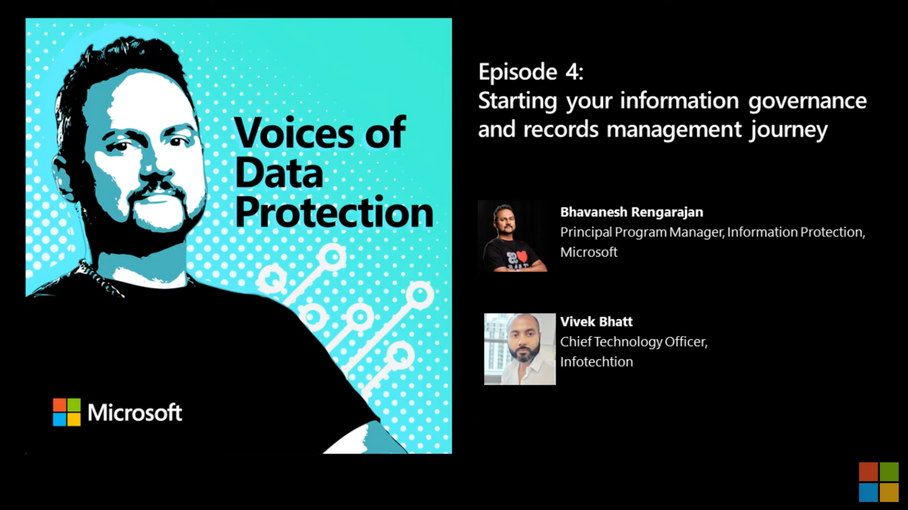From Big Buckets to Records Management in M365

![]()
I have previously written about the value of big bucket retention categories to make it easier for users and machines to select the right retention to ensure compliance with business standards and regulations. I am a big fan of Susan Cisco´s work around big bucket categories, and below are some of her big buckets pros […]
How to establish good information management policies

![]()
We often meet organizations with ineffective governance policies, – this could be retention policies, information security policies, or information classification policies. The problems often evolve around one or more of the following areas. The policy does not provide value. If the policy does not help business users do their job, then the policy will be […]
Microsoft Podcast: How to start your information governance and records management journey for M365

![]()
In this episode, Microsoft speaks with Vivek Bhatt, Chief Technology Officer at Infotechtion, about charting the direction of your information protection and records management journey. Listen in as Vivek and Bhavy discuss the importance of identifying your company’s key success factors, developing a roadmap that quickly provides value to your business, and the lessons learned […]
Webinar: Automate M365 governance with new Microsoft machine learning and AI

![]()
Webinar Wednesday February 24th, 2021 at 9am PT / 12pm ET / 18:00 CET Microsoft has introduced new AI and machine learning that can automate how important data and content is identified and classified. This will improve search and discovery, but also ensure compliance with business standards and regulations, e.g. GDPR. Attend this webinar to […]
Microsoft Records Management Auto-Classification Options

![]()
Classification Options Many organizations try to rely on users to manually identify, capture, and classify records that should be retained, but this depends on users always doing the right thing to ensure compliance. A better approach is compliance-by-design. Records management happens automatically based on how users are storing or working with documents. Many large and […]
The Dangers of M365 Add-On Solutions

![]()
There are a variety of IT solutions that improve how information is captured, processed, and managed in Microsoft 365 (M365), but some of them actually create a long-term problem for you. By buying these 3rd party solutions, you are then saying no to many Microsoft innovations and improvements. Many Microsoft partners that offer 3rd party […]
Architecture Foundation for Automation

![]()
We are at a key inflection point, and going through a once in a generation change in how we do business, and this creates a unique opportunity to integrate Information management best practices and behaviors into the new operating model. If we act now, we can also leverage the ongoing digital transformation and develop a […]
Microsoft Teams and Site templates to automate M365 Information Governance

![]()
Perhaps, the most important part of information governance is the use site / Teams’ templates. These templates define the structure of your site or team. Consider it is as a sketch of the site / team that tells you what components will be included when the template is deployed. For SharePoint site it means that […]
M365 architecture to improve access and control of information

![]()
If you have many M365 users and files, then you need to plan how to best connect people, information, and knowledge with required security and compliance. Your M365 architecture and setup – like in the picture below – should enable people to quickly go where they want to find what they need, but also ensure […]
M365 Information Governance: Automate metadata extraction to improve search and discovery

![]()
Metadata is key to discover, understand, and manage unstructured information like documents and records. Users benefit from this when trying to find relevant information, but most of them are not willing to add metadata manually when storing important documents and records. The key to success is therefore to automate how metadata is added to documents […]

